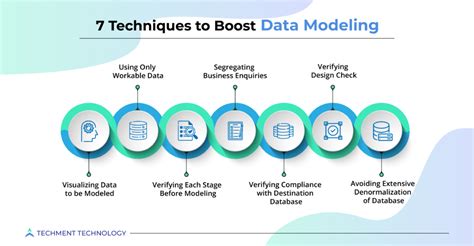Data modeling is a crucial aspect of data management, as it enables organizations to create a conceptual representation of their data assets. This representation is essential for effective data governance, data integration, and data analysis. In this article, we will delve into the best practices for data modeling, exploring the principles, techniques, and tools that can help organizations create robust and scalable data models.
Introduction to Data Modeling

Data modeling involves creating a visual representation of an organization’s data assets, including entities, attributes, and relationships. This process helps to identify data redundancies, inconsistencies, and gaps, ultimately leading to improved data quality and better decision-making. There are several types of data models, including conceptual, logical, and physical models, each serving a specific purpose in the data modeling process.
Key Points
- Define a clear scope and objectives for the data modeling project
- Involve stakeholders from various departments to ensure a comprehensive understanding of the data
- Use standardized notation and terminology to ensure consistency and clarity
- Focus on the most critical data entities and relationships first
- Use data modeling tools to automate and streamline the process
Best Practices for Data Modeling
The following best practices can help organizations create effective data models:
- Define a clear scope and objectives: Before starting a data modeling project, it is essential to define the scope and objectives of the project. This includes identifying the specific business problems that the data model is intended to solve and the key stakeholders who will be involved in the process.
- Involve stakeholders from various departments: Data modeling is a collaborative process that requires input from stakeholders from various departments, including business users, IT professionals, and data analysts. This helps to ensure that the data model is comprehensive and accurate.
- Use standardized notation and terminology: Standardized notation and terminology are essential for ensuring consistency and clarity in the data model. This includes using established data modeling notations, such as entity-relationship diagrams (ERDs) or object-role modeling (ORM).
| Data Modeling Technique | Description |
|---|---|
| Entity-Relationship Diagrams (ERDs) | A graphical representation of entities and relationships in the data model |
| Object-Role Modeling (ORM) | A methodology for designing and implementing data models using objects and roles |
| Dimensional Modeling | A technique for designing data warehouses and business intelligence systems |

Advanced Data Modeling Techniques

Advanced data modeling techniques, such as data warehousing and big data analytics, require specialized skills and tools. These techniques involve designing and implementing large-scale data systems that can handle complex data sets and analytics workloads.
Data Warehousing and Business Intelligence
Data warehousing and business intelligence (BI) involve designing and implementing data systems that support business decision-making. This includes creating data models that integrate data from various sources, such as transactional systems, social media, and sensors.
The following are some best practices for data warehousing and BI:
- Use a scalable and flexible architecture: A scalable and flexible architecture is essential for handling large volumes of data and supporting complex analytics workloads.
- Implement data governance and quality control: Data governance and quality control are critical for ensuring that the data is accurate, complete, and consistent.
- Use data visualization and reporting tools: Data visualization and reporting tools are essential for presenting complex data insights to business users and stakeholders.
What is the purpose of data modeling?
+The purpose of data modeling is to create a conceptual representation of an organization's data assets, including entities, attributes, and relationships. This helps to identify data redundancies, inconsistencies, and gaps, ultimately leading to improved data quality and better decision-making.
What are the different types of data models?
+There are several types of data models, including conceptual, logical, and physical models. Conceptual models provide a high-level overview of the data, logical models define the relationships between entities, and physical models describe the physical storage of the data.
What are some best practices for data modeling?
+Some best practices for data modeling include defining a clear scope and objectives, involving stakeholders from various departments, using standardized notation and terminology, focusing on the most critical data entities and relationships first, and using data modeling tools to automate and streamline the process.
In conclusion, data modeling is a critical aspect of data management that requires careful planning, execution, and maintenance. By following best practices and using standardized notation and terminology, organizations can create robust and scalable data models that meet their evolving business needs. Advanced data modeling techniques, such as data warehousing and big data analytics, require specialized skills and tools, but can provide significant benefits in terms of improved data quality, reduced data redundancy, and enhanced data analysis capabilities.



